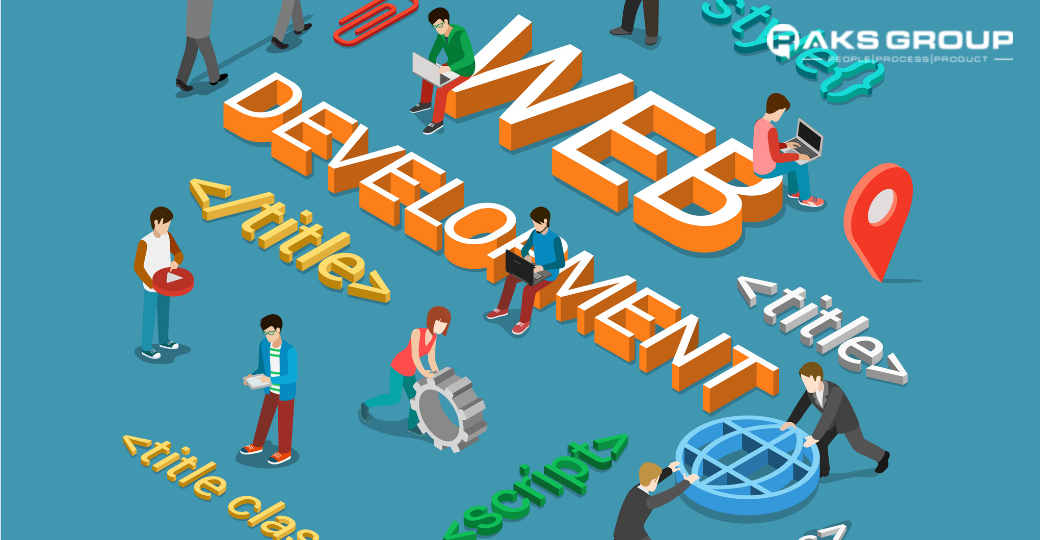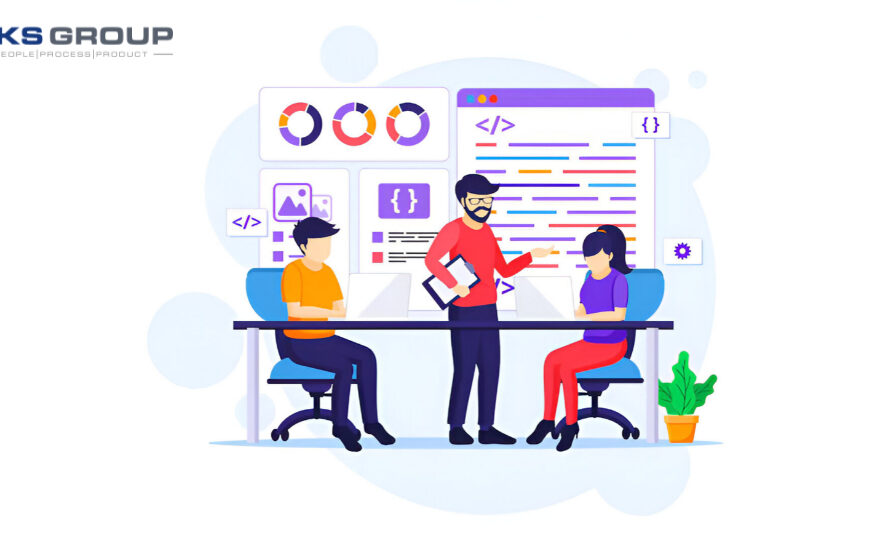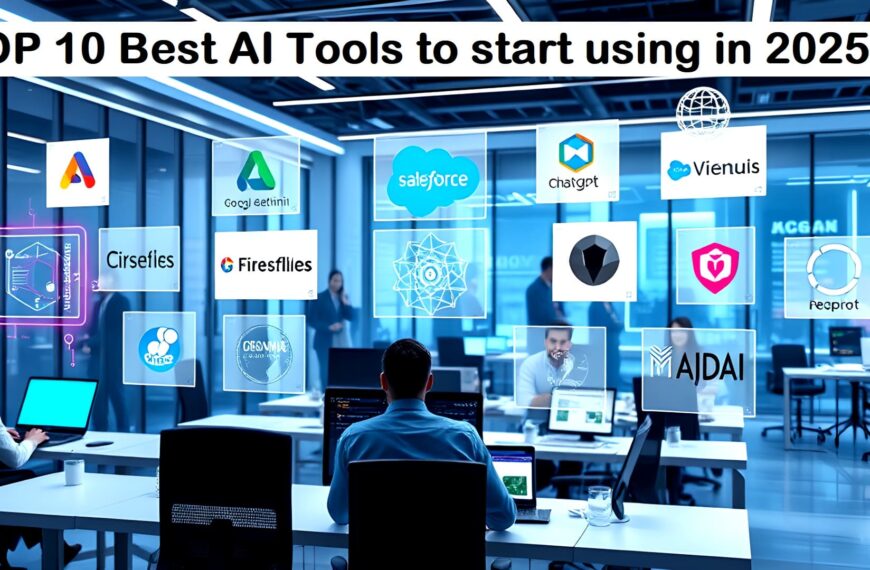In 2024, the demand for skilled Full Stack Developers continues to soar. As businesses increasingly seek professionals who can handle both front-end and back-end development, mastering the full stack has never been more crucial. Whether you’re an aspiring developer or looking to upgrade your skills, this comprehensive roadmap will guide you through everything you need to become a successful Full Stack Developer in 2024
What is a Full Stack Developer?
A Full Stack Developer is proficient in both front-end and back-end technologies, allowing them to build complete web applications from scratch. This includes everything from designing user interfaces to managing databases and servers. The role requires a broad range of skills, making it both challenging and rewarding.
Why Become a Full Stack Developer in 2024?
The tech industry is rapidly evolving, and Full Stack Developers are at the forefront of this transformation. Here are a few reasons why 2024 is an ideal year to pursue a career in full stack development:
– High Demand: Companies are increasingly looking for versatile developers who can handle multiple aspects of web development.
– Lucrative Salaries: Full Stack Developers are among the highest-paid professionals in the tech industry.
– Career Flexibility: With skills in both front-end and back-end, you have the flexibility to work on a wide range of projects.
The Core Skills of a Full Stack Developer
To become a successful Full Stack Developer, you need to master several key technologies and concepts. Here’s a breakdown of the essential skills:
- HTML, CSS, and JavaScript
– HTML: The foundation of web development, HTML (HyperText Markup Language) is used to create the structure of web pages.
– CSS: Cascading Style Sheets (CSS) are used to style and layout web pages, making them visually appealing.
– JavaScript: A versatile programming language that allows you to add interactivity to your web pages.
Mastering these three core technologies is the first step in your journey to becoming a Full Stack Developer.
- Front-End Frameworks and Libraries
– React.js: A popular JavaScript library for building user interfaces, especially single-page applications.
– Angular: A robust framework developed by Google, used for building dynamic web applications.
– Vue.js: A progressive framework for building user interfaces, known for its simplicity and flexibility.
These frameworks and libraries streamline the development process, making it easier to build complex and responsive web applications.
- Version Control/Git
– Git: A version control system that allows developers to track changes in their code and collaborate with others. Platforms like GitHub, GitLab, and Bitbucket are essential for any developer.
Learning Git is crucial for managing code changes and collaborating with other developers in a professional environment.
- Back-End Development
– Node.js: A JavaScript runtime that allows you to build scalable network applications. It’s commonly used for back-end development.
– Express.js: A web application framework for Node.js, used to build RESTful APIs and web applications.
– Django/Flask: Python-based frameworks for building web applications quickly and efficiently.
– Ruby on Rails: A popular web application framework written in Ruby.
Understanding back-end development is essential for managing databases, server logic, and application integration.
- Databases
– SQL Databases: Relational databases like MySQL, PostgreSQL, and SQLite are used for structured data storage.
– NoSQL Databases: Non-relational databases like MongoDB and Cassandra are used for unstructured data storage.
Knowledge of both SQL and NoSQL databases is essential for storing and managing data in web applications.
- DevOps and Deployment
– Continuous Integration/Continuous Deployment (CI/CD): Tools like Jenkins, Travis CI, and CircleCI automate the testing and deployment process.
– Containerization: Docker is a popular tool for creating, deploying, and running applications in containers.
– Cloud Platforms: AWS, Azure, and Google Cloud are leading cloud service providers. Understanding cloud platforms is crucial for deploying and scaling applications.
DevOps practices ensure that your applications are deployed efficiently and run smoothly in production environments.
- API Development and RESTful Services
– RESTful APIs: Representational State Transfer (REST) is an architectural style used to create scalable web services.
– GraphQL: A query language for your API, allowing clients to request exactly the data they need.
Understanding API development is crucial for enabling communication between the front-end and back-end of your applications.
- Testing
– Unit Testing: Testing individual components of your code to ensure they work as expected. Tools like Jest, Mocha, and Jasmine are popular for unit testing.
– Integration Testing: Testing the interaction between different components of your application.
– End-to-End Testing: Testing the entire application from start to finish to ensure that everything works together seamlessly.
Testing is a critical aspect of software development, ensuring that your applications are reliable and bug-free.
2024 Full Stack Developer Roadmap: Step-by-Step Guide
Now that we’ve covered the core skills, let’s break down the step-by-step roadmap to becoming a Full Stack Developer in 2024:
Step 1: Learn the Basics of Web Development
– Start with HTML, CSS, and JavaScript.
– Build simple static websites to get comfortable with these technologies
Step 2: Master Front-End Development
– Learn a front-end framework like React.js, Angular, or Vue.js.
– Build dynamic web applications that interact with users.
Step 3: Get Comfortable with Version Control
– Learn Git and create a GitHub account.
– Practice by contributing to open-source projects or collaborating with other developers.
Step 4: Dive into Back-End Development
– Choose a back-end language and framework (e.g., Node.js with Express, Python with Django).
– Build RESTful APIs and learn how to connect your back-end to a front-end application.
Step 5: Learn Database Management
– Start with SQL databases like MySQL or PostgreSQL.
– Explore NoSQL databases like MongoDB.
– Build applications that interact with databases for storing and retrieving data.
Step 6: Explore DevOps and Deployment
– Learn the basics of CI/CD and containerization with Docker.
– Deploy your applications to cloud platforms like AWS or Azure.
Step 7: Practice API Development
– Build and document RESTful APIs.
– Explore GraphQL for more advanced API development.
Step 8: Focus on Testing
– Learn unit, integration, and end-to-end testing.
– Ensure your applications are robust and free from critical bugs.
Step 9: Build Real-World Projects
– Apply what you’ve learned by building real-world applications.
– Create a portfolio showcasing your projects.
Step 10: Stay Updated and Keep Learning
– The tech industry is always evolving, so stay updated with the latest trends and technologies.
– Follow tech blogs, attend webinars, and participate in developer communities.
Full Stack Developer Career Opportunities in 2024
With these skills, you’ll be well-equipped for a wide range of career opportunities in 2024. Some potential roles include
– Full Stack Developer: Work on both front-end and back-end development.
– Front-End Developer: Specializes in creating user interfaces and user experiences.
– Back-End Developer: Focus on server-side logic, databases, and application integration.
– DevOps Engineer: Manage deployment pipelines, automation, and cloud infrastructure.
– Software Engineer: Work on various aspects of software development, including full stack development.
Conclusion
The Full Stack Developer roadmap for 2024 is your guide to mastering the skills needed to excel in one of the most in-demand roles in the tech industry. By following this roadmap, you’ll be equipped with the knowledge and expertise to build complete web applications, making you a valuable asset in today’s digital landscape.
Whether you’re starting from scratch or looking to enhance your existing skills, this roadmap will help you navigate the ever-changing world of full-stack development. So, get started today and take the first step towards a successful career as a Full Stack Developer in 2024!

















